
Helmets & accessories
The helmet is meant to protect the most important thing you have, and is therefore a central part of personal protective equipment. Helmets comes in many varieties and uses. Different helmets protect against different dangers.
When choosing helmets for use when working at height, there are several factors you must consider to ensure optimal protection and comfort. Here are some important points to think about:
Safety standards
Make sure the helmet meets the current safety standards for working at height. It guarantees that the helmet has been tested and approved to withstand impact, penetration and other potential hazards.
In Norway, it is EN 12492 and EN 397 that are most important. EN 397 is the European standard for industrial helmets and specifies requirements for protection against falling objects, impact and penetration. It also covers requirements for chin straps, adjustments and performance requirements.
EN 12492 is the standard for helmets intended for recreational climbing. Basically, it is not relevant for you who work at height, but they have a requirement for the strength of the chin strap which is worth taking with you, and also require an industrial helmet.
All the helmets we sell are within the standard that applies when you are going up in height.
Fit and adjustment
The helmet should sit well on your head. Choose a helmet with an adjustable chin strap and internal headband so that you can adapt it to your head shape and size. A properly fitted helmet fits well and provides optimal protection.
Ventilation
Work at height can be physically demanding and lead to increased body heat. Make sure the helmet has an adequate ventilation system to provide air circulation and cooling. This will increase comfort during work.
Additional functions
Some helmets have additional features such as protection for the neck and sides of the head, integrated eye protection or attachment options for headlamps. Consider functions that are necessary for the work you do and the relevant security requirements.
Inspection and maintenance
Be sure to inspect and maintain your helmet regularly. This includes checking for wear, cracks or other signs of damage. Replace the helmet if necessary and follow the manufacturer's instructions for proper maintenance and longevity of the helmet.
The helmet is meant to protect the most important thing you have, and is therefore a central part of personal protective equipment. Helmets comes in many varieties and uses. Different helmets protect against different dangers.
When choosing helmets for use when working at height, there are several factors you must consider to ensure optimal protection and comfort. Here are some important points to think about:
Safety standards
Make sure the helmet meets the current safety standards for working at height. It guarantees that the helmet has been tested and approved to withstand impact, penetration and other potential hazards.
In Norway, it is EN 12492 and EN 397 that are most important. EN 397 is the European standard for industrial helmets and specifies requirements for protection against falling objects, impact and penetration. It also covers requirements for chin straps, adjustments and performance requirements.
EN 12492 is the standard for helmets intended for recreational climbing. Basically, it is not relevant for you who work at height, but they have a requirement for the strength of the chin strap which is worth taking with you, and also require an industrial helmet.
All the helmets we sell are within the standard that applies when you are going up in height.
Fit and adjustment
The helmet should sit well on your head. Choose a helmet with an adjustable chin strap and internal headband so that you can adapt it to your head shape and size. A properly fitted helmet fits well and provides optimal protection.
Ventilation
Work at height can be physically demanding and lead to increased body heat. Make sure the helmet has an adequate ventilation system to provide air circulation and cooling. This will increase comfort during work.
Additional functions
Some helmets have additional features such as protection for the neck and sides of the head, integrated eye protection or attachment options for headlamps. Consider functions that are necessary for the work you do and the relevant security requirements.
Inspection and maintenance
Be sure to inspect and maintain your helmet regularly. This includes checking for wear, cracks or other signs of damage. Replace the helmet if necessary and follow the manufacturer's instructions for proper maintenance and longevity of the helmet.
Do you miss something?
Missing items? We have just launched our new website. Please inform us if there are items that you are missing in our webshop by sending us an e-mail at post@aaksafety.no or use the contact us function at the top of the page.
Sorry, not any available booking time slots found for selected date.
Following dates have time slots available for booking
